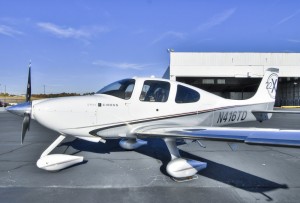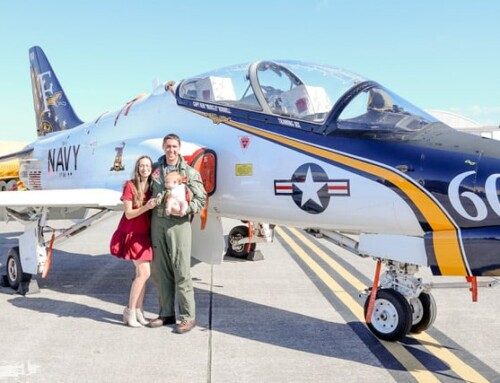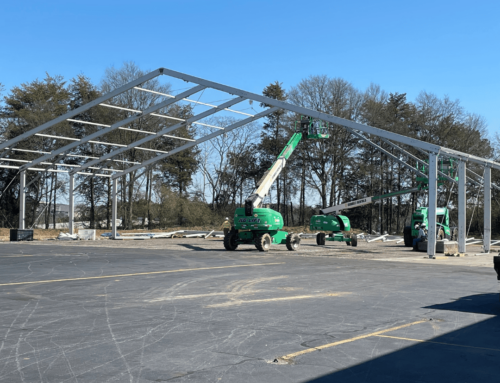 When interviewing a pilot to fly our airplane, we always want a pilot with a pleasant personality, right? We want a pilot who’s always cheerful, always smiles, never complains, and always exudes confidence and always says “yes” even when the weather is down in the trees and you can hear distant thunder approaching as you are boarding your airplane.
When interviewing a pilot to fly our airplane, we always want a pilot with a pleasant personality, right? We want a pilot who’s always cheerful, always smiles, never complains, and always exudes confidence and always says “yes” even when the weather is down in the trees and you can hear distant thunder approaching as you are boarding your airplane.
If this sounds like your pilot, have you found what you were looking for, sort of a “super pilot”? I’m sure they exist; super pilots, that is. I’m confident I know a few. But how do you know when you have found one? How do you know if your pilot has the “right stuff”? Is your pilot really looking out for your best interest; or his own…or does he even know the difference?
I recently flew to the coast with some of my favorite clients aboard. The flight plan for the day was to fly them into a coastal airport in the morning and return later that same evening. The weather was forecast to be low at the coast, but not so low that I couldn’t get into our island airport destination. The airport had a GPS approach and the weather ceiling was forecast to be above the minimums required for the approach all day long. A pretty routine flight for me, or so I thought. I fueled the airplane with enough fuel to fly to the destination, shoot the approach, fly to the alternate, shoot that approach and still have 1 hour of fuel left in the airplane. That’s better than the FAR minimum of 45 minutes of fuel and in keeping with my personal minimum of always wanting to land with at least one hour of fuel left in the airplane.
 The airplane was a single engine Cirrus SR-22. Though it just has one engine, it has dual alternators, backup flight instruments and just about dual or backup everything else. With its XM weather radar and anti-ice system the airplane is actually very well equipped for the weather I was about to take it into. In my six years of flying Cirrus airplanes, I have become very confident in the reliability of the airplane’s power plant also. And of course there is always CAPS (Cirrus Airframe Parachute System)-the airframe parachute that could be used in case of a dire emergency.
The airplane was a single engine Cirrus SR-22. Though it just has one engine, it has dual alternators, backup flight instruments and just about dual or backup everything else. With its XM weather radar and anti-ice system the airplane is actually very well equipped for the weather I was about to take it into. In my six years of flying Cirrus airplanes, I have become very confident in the reliability of the airplane’s power plant also. And of course there is always CAPS (Cirrus Airframe Parachute System)-the airframe parachute that could be used in case of a dire emergency.
I was confident in the weather, the airplane, and my ability to fly the flight and make the right decisions. When all preparations were completed, we launched into a gray overcast sky and proceeded south east into the deteriorating, raining weather that would be with us all the way to the coast. The flight seemed routine. The rain on the windshield was steady. The visibility out the windows was nil as we were solidly in the clouds from the time we took off till we landed some hour and thirty minutes later. Turbulence was light to occasionally moderate-“nothing to write home about”. We encountered a few heavy weather areas on the radar that we simply flew around as we proceeded on to our coastal destination. Once we arrived over our island airport, we were cleared for a GPS approach that was aligned perfectly straight with the runway. As we began our approach into the airport, the weather remained the same: moderate rain with light turbulence. A quick check of the ATIS revealed that the weather was still being reported to be above approach minimums, and I was expecting to complete this approach to a successful landing on the island. Once past the final approach fix, I descended to our approach minimum descent altitude of only 540 feet above the ground. Even at so low an altitude, the wind was still blowing at a 30 mph crosswind resulting in a 20 degree crab angle into the wind during my approach. My client passenger was now helping and watching out ahead of the aircraft trying to get a glimpse of the airport runway. Though our approach was on track, on altitude, and flying a steady approach speed, we didn’t see any part of the airport, just but more clouds and rain. Once I was convinced that I was directly overhead the runway and still had nothing in sight, I declared a “missed approach”, applied full throttle and pulled the nose up into a shallow climb, and began flying the “published” missed approach procedure. Next, I radioed the airport control tower to advise them that we were now flying the “missed approach”. He quickly changed me over to the local approach controller who asked “what do you want to do next”? Before I could answer the controller, my client asked “could we try the approach again”? Without hesitation I replied, “no, I don’t think we need to try it again because our earlier approach went very well; the weather was ‘solid’. By that I mean the clouds were not scattered or broken so there is not an issue of poor timing where the clouds were concerned”. I now turned my attention back to the local approach controller and advised “we would like to receive radar vectors for the ILS approach at our alternate airport”. The next few minutes were “busy minutes’’, discussing the drive time out to the island with my clients in their forthcoming rental car, checking the weather at our “now new destination”, and quickly setting up for the next instrument approach. We did this while changing airspeeds, altitudes and headings as the controller maneuvered my unexpected flight into his busy flow of traffic at the larger airfield. The ILS approach itself went well-we broke out of the clouds at 100’ above minimums (right where we expected to), saw the runway just ahead and made a wonderful smooth landing on the wet runway. A quick call on the Unicom got the FBO working on the paperwork for a rental car (luckily one was already at the airport). After a quick bathroom break, my clients were in the car and headed toward their convention meetings on the nearby island.
Next, I turned my attention to repositioning the airplane over to the island airport later in the day so I could pick up my clients there and save them time and the drive back out to the mainland airport. The weather, however, had other ideas. I quickly learned that the weather ceiling had now dropped to 100’ on the island, and the newly issued forecast was for it to stay there the rest of the day.
I called and informed my clients about the new forecast for the day and advised them that they should expect to return back to the mainland airport when they were ready to leave for home later that evening.
As evening approached, I began my preflight preparations for our evening flight. However, my weather updates indicated that the route we had flown earlier that morning was now mixed with colder air and the possibility of embedded thunderstorms! Let’s see: moderate rain, possible ice, embedded thunderstorms…upon hearing this, my decision was simple. I called my clients, advised them to secure a room for the night, and we would fly home early the next day after all the bad weather had moved through the area. That call was well received, and we were all off to our hotel rooms for the evening.
The next morning we all met once again at the airport. After our takeoff and climb out through a low cloud layer, we were greeted by the beautiful morning sunshine and the smooth, clear skies that yesterday’s weather had left in its wake.
It was then that my client relayed an interesting story, a story that sparked this blog: while at the convention the day before, he told some friends about our experience trying to land on the island airport. He described how the rain was coming down and how low the clouds were as we attempted to find the airfield. He then described how, after an unsuccessful attempt, “we went and landed on the mainland, and we drove over to the island”. This is where it gets interesting. Afterwards, on of his colleagues approached him and asked him if he was sure that his pilot had his best interests at heart. The colleague said that some of these “hired pilots” are afraid to say “no” even when the weather is really bad, for fear of losing their job. His colleague went on to explain that he, himself, was a pilot and that he owned a Beechcraft Baron. A twin engine, full de-iced and radar equipped airplane. After checking the weather for this trip, he decided to leave his Baron in its hangar and drive down to the island.
My client said that he found himself defending me as his pilot and the Cirrus as his choice of airplanes. He explained to his friend and colleague how capable the Cirrus was of handling moderate IFR weather. He said he spoke extensively about my years of flying experience, and even brought up my airline pilot background. I felt for my client, having to defend his decisions to a colleague and trying not to look fool-hearty.
After my client finished relaying the story, he asked me what I thought. My reply came quickly and without much forethought (as I was flying the airplane at the time). I explained that it sounded to me that his friend had made a classic go/no-go decision. From what I had just heard, his friends “go or no go” decision process seemed very sound. Even though he had a very capable airplane; maybe he felt that his personal skills or flight currency or experience were not up to tackling the weather we had flown in the day before. “Nothing wrong with that; sounds like he made a good decision to me” I added. “Yesterday’s weather, though rainy and with low ceilings, was pretty much what I personally call ‘textbook weather’.” “Although the forecast was for good enough weather to make the flight and complete the approach into the island airport, it obviously went below forecast minimums just as we arrived over the airfield. No real surprise there either, as the weather ‘goes down’ sometimes and I prepared for that possibility by planning an alternate airport and I brought along plenty of extra fuel”. Not everyone looks at the weather the same, and I might have made a different decision to go if, after doing my own personal assessment, I decided that my instrument flying skills were rusty or I didn’t have the confidence in our airplane that I do. I finished my reply with “and if you wanted to prove to him that you didn’t have a ‘pushover’ for a pilot, you should have told him about how I called and canceled the trip home the night before when I thought the weather was becoming too dicey for our little airplane”. He agreed and admitted “I wished I had thought to say that”.
The ability to say “no” should be a trait you are looking for in your “super pilot”. Your ideal pilot should not be a “yes man”. In fact, you will want your pilot to be accommodating, but not at the expense of safety. Sound judgment will always be a top quality in every “super pilot”. A well placed “no” is sometimes the right thing to say, and will earn the pilot a lot of respect when it is surrounded by “the right stuff”.
Tim McConnell
Special Services Corporation
Director of Aviation Accounts
02/11/2013






Hi Tim,
love your article. would you mind me copying it with credit to you for my blog? I am always at a loss to what to write to our charter customers and this is a perfect piece. As you can tell if you visit my website, I have not been very active on our blog and need a good story to get it going again.
Les Brown
American Business Airways
Les,
Of course you are welcome to share it. Thank you for the note. It is always encouraging to receive feedback and know somebody is out there reading the blog!
Best Regards,
Tim